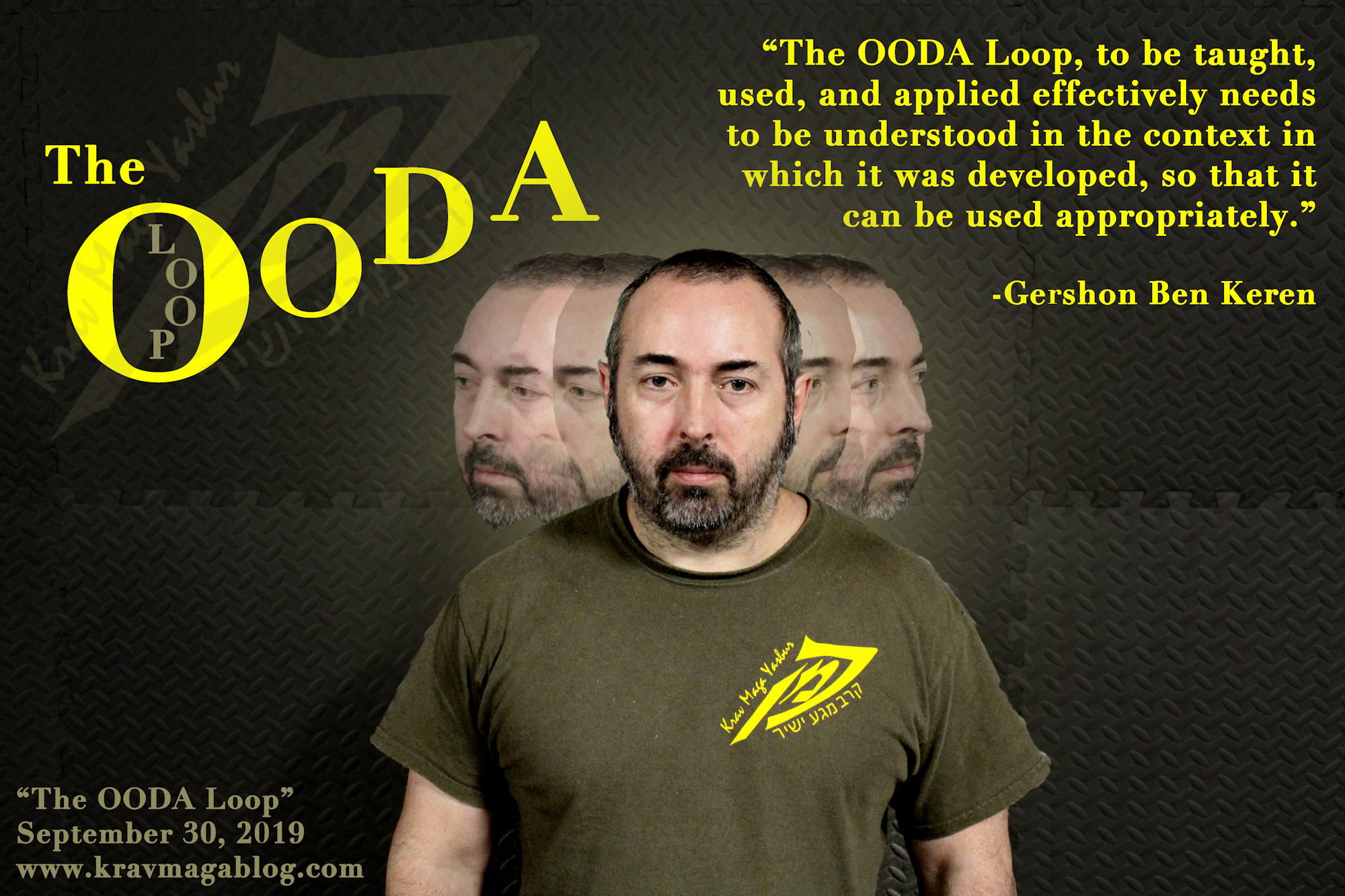Training Methods That Can Mislead, is an article written by Gershon Ben Keren, a 5th Degree Black Belt in Krav Maga, who teaches Krav Maga in Boston, MA. He has also authored three Amazon best-Selling Books on Krav Maga.
This article comes out of a conversation/thread on social media that I was involved in. During the conversation, I mentioned that striking, and especially striking with a simultaneous block, isn’t always effective – I’m not saying that it’s never effective, just that there are times, especially when you are dealing with knives, that your emphasis should be on controlling the weapon arm at the earliest opportunity, before moving on to combatives, etc. One response that I received, advocated the use of simultaneously striking, whilst blocking against a knife attack (and once again, I’m not saying this isn’t ever effective), based on the fact that when training against an “assailant” wearing protective cage headgear they only needed 20% power in their punches to be effective. There is sometimes a danger in drawing conclusions about the effectiveness of things, based on the way that we train. There are times that our training replicates reality, and times when it may mislead us. In this blog, I want to look at some of our training methods that, while they may be beneficial in one context, may not be in others - and why we should be aware of this.
Training in protective headgear has benefits, however we must be careful about the conclusions we draw when training with such equipment. As soon as you put headgear on, you increase the size of the target quite considerably. Also, headgear tends to “flatten” out the target, presenting a striking surface that is much easier to hit. The face/head is largely a cylindrical striking surface, which can result in strikes/punches rolling off it, rather than being absorbed by it. If you then put any form of protective mitt or glove on the hand, you increase the size of the striking surface. A larger striking surface, hitting a larger, flatter target, gives you a much better chance of accurately landing a strike that will drive into the target, when compared to a fist hitting the face. When you add the fact that most headgear, by weight or design, prevents the head from turning when hit, the effect you get when training this way, does not reflect reality. Are there benefits to training this way? Absolutely. If we are to try and put our students under pressure and give them a feel for what a dynamic assault looks like (in a safe manner), putting on headgear and gloves helps us to do this. However, determining the efficacy of striking in every situation based on this manner/style of training would be wrong. In real-life, punches don’t always get absorbed to the same degree that they do when training with gloves and headgear; they roll off, they get ridden, etc. In some cases, against a pain-resistant attacker (under the effects of adrenaline, drugs or alcohol) they don’t even register – and this is something that is extremely difficult to replicate in training. Just because one method of training has certain benefits and usefulness, this shouldn’t lead us to believe that it accurately reflects reality.
Sparring is another training method that has great benefits, but shouldn’t be thought of as replicating a real-life fight. It teaches a lot of things but it doesn’t teach everything, and this is something that we need to understand when we try and give our students the skills and attributes they need to survive a real-life altercation. With any training method, such as sparring, we should be aware of the skills that the method is trying to develop. Sparring teaches breathing, threat recognition, dynamic responses, movement, etc., however it doesn’t replicate an assault, because it’s consensual, with each participant separating and giving distance to give the other opportunities, etc. Sparring, is a back and forth game, rather than the one-way street that an assault is. I have had students who were lousy at sparring, but could handle themselves in real-life altercations – hopefully their experiences when sparring helped them, but it would have been wrong to predict how they would have responded to an actual assault based on their sparring performance on the mats. I believe sparring has benefits, but like any training approach, I recognize its limitations.
We should also recognize when our equipment may produce bad habits, or make it difficult for our students to perform good technique. A long time ago, I stopped having my students practice punching on kick shields, or other large flat pads. When I took my first IKMF course, I was told by an instructor that the first equipment I should invest in were kick shields, as these were the most versatile pads and could be used for all manner of striking. In one sense, he was right, but what I started to notice was that because my students were striking a flat surface directly in front of them, they weren’t turning their hips into the strike, and were simply punching straight forward with their arms and shoulders, and not utilizing the larger hip and back muscles. When I started to use focus mitts for training punches, having the holder angle the pad, so that the person throwing the strikes had to turn their torso to make the punch, the problem was rectified. Are kick/striking shields useful? Yes, like all pieces of training equipment they have their place, but they shouldn’t be used universally.
Another issue that can arise from training with pads, is that unless the pads are moved, the student only gets good at striking against static targets, and may be left with a false sense of their ability to generate power. There is a big difference about how you generate power when moving than when static, and when we consider that real-life violence is dynamic, we should introduce dynamism into our pad work. This is something that those practicing combat sports understand very well, but is not so prevalent amongst the reality-based self-defense community. If you practice dynamic pad-work as well as static pad-work, fantastic. If you don’t, I would advocate that you should start.
The full training package that we offer/present to our students should replicate and represent all parts, and potential parts, of a real-life altercation, however we don’t need to do it utilizing just one method or approach. We should be very clear about what skills we are trying to train and develop, whilst at the same time understanding what isn’t being trained, and/or isn’t representative of reality. In my early days of teaching and training Krav Maga, I convinced myself that real-life reflected the way I’d been trained (I even rewrote some of my previous experiences of violence to fit in with some of the things I’d been taught), and was surprised when it didn’t. Our training should reflect reality, and not the other way round, and this means constantly analyzing our methods, and amending and developing them as necessary.
0 COMMENTS















